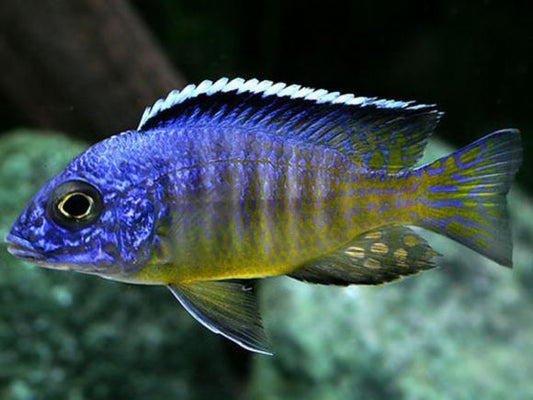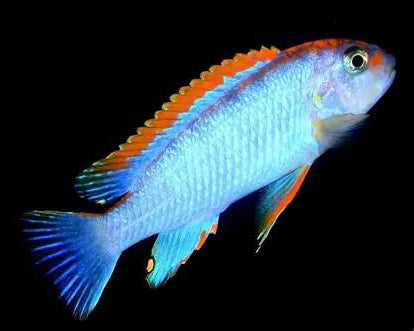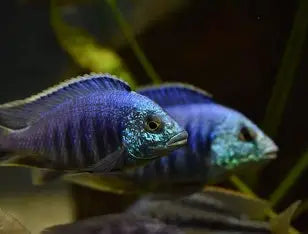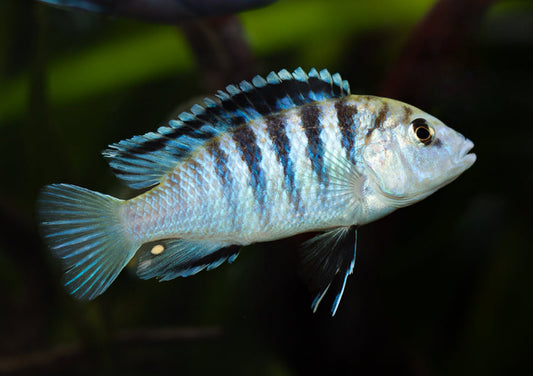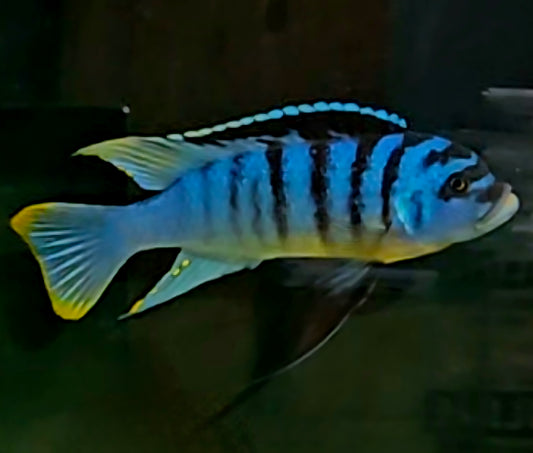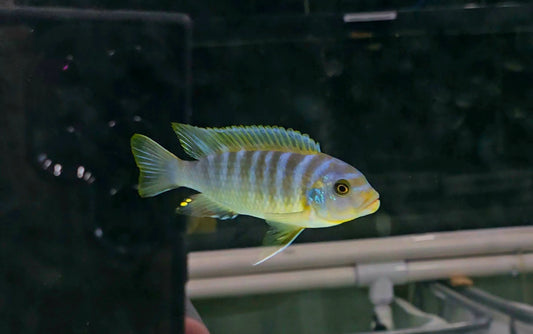Lake Malawi Cichlids
These cichlids originate from Lake Malawi, one of the world’s oldest and largest freshwater lakes. This vast, crystal-clear lake supports a rich diversity of aquatic life and is especially renowned for its numerous species of cichlid fish. Scientists estimate there are over 1,000 species of fish from Lake Malawi, with only about one-third of them officially named and classified. Out of all these fish, just 44 are not cichlids, meaning cichlid fish dominate this ecosystem. Over 99% of these species are endemic to the lake, highlighting its unique biodiversity. The lake’s water chemistry and rocky habitats are key factors in supporting this variety of life.
Mbunas – The Rock-Dwelling Cichlids
Mbunas, often called rock-dwelling African cichlids, are found along the rocky shores of Lake Malawi. This group is made up of ten major genera, including Pseudotropheus, Melanochromis, Labidochromis, Petrotilapia, Cynotilapia, Cyathochromis, Genyochromis, Gephyrochromis, Iodotropheus, and Labeotropheus. Unlike schooling fish, mbunas prefer to form loose colonies where each individual maintains a strong territory. This territoriality increases during breeding periods. Their aggression typically targets similar-looking fish. Frequent small meals, along with a well-arranged aquarium offering plenty of hiding spaces, help manage their natural behaviors. Another popular management method involves overcrowding the tank, which disperses aggression among more individuals, but this should be done carefully to avoid stress.
Maintaining the right female-to-male ratio is critical for a peaceful environment, with at least two females per male being ideal. Creating an aquarium that mimics the rocky habitat of Lake Malawi is essential for their health. Mbunas, like most Malawi Cichlids, are mouthbrooders; females carry fertilized eggs in their mouths until the fry are ready to be released. Their short, compact bodies let them slip through tight rock crevices, and their specialized mouths help them scrape algae from surfaces. Their digestive systems are adapted primarily for eating algae and plant matter but can process occasional animal protein such as shrimp. Overfeeding them animal protein, however, can cause digestive issues like Malawi Bloat. If you are searching for mbuna cichlids for sale, always pay close attention to their specific dietary needs.
For more details, see our Mbuna Collection.
Haps and Peacocks – Lake Malawi's Majestic Predators
The group known as Haps and Peacocks includes some of the largest African cichlids in Lake Malawi. These cichlids prefer sandy or open water habitats, rather than the rocky areas favored by mbunas. This group is made up of more than 20 different genera, such as Haplochromis, Aulonocara (known as peacock cichlids), and Copadichromis (often called Utaka cichlids). These cichlids are mainly predatory, eating smaller fish and invertebrates. Their diet can also include young cichlids, so it is important to choose tank mates carefully. Haps and peacocks are much larger than mbunas and generally thrive in aquarium tanks that hold at least 55 gallons. More space helps these fish display natural and less aggressive behaviors.
Anyone considering a malawi cichlid aquarium with haps and peacocks can explore our collections here: Peacock Collection ; Hap Collection
Caring for Haps, Peacocks, and Mbunas
For larger haps, using a soft, sandy substrate is ideal, as rocks may restrict their movement and cause injuries. Haps are also polygamous, so a higher female-to-male ratio supports a harmonious tank. In aquariums, males may form small harems and weak social groups. This group is also known for popular species such as the Electric Blue cichlid (Sciaenochromis fryeri), which display striking colors. Managing the social structure and space in the tank helps reduce aggression and stress in all cichlid fish from Lake Malawi. Successful care results in vibrant, active fish that show their natural behaviors.
Essential Water Parameters
These cichlids need stable and precise water conditions to remain healthy. Temperature should be kept between 78°F and 82°F. The ideal pH range is 7.8 to 8.6, mimicking the alkaline conditions of their native lake. The water hardness should be maintained between 4 and 6 dH. If you combine mbunas, haps, or peacocks in one tank, exercise extreme caution. Mbunas can be aggressive, while haps are predatory. There is always a risk of crossbreeding among species. Experienced aquarists can attempt this challenging setup, but close monitoring is necessary. Water chemistry stabilizers like Seachem Malawi Victoria Buffer are helpful for meeting these specific needs.
Aquarium hobbyists looking for african cichlids for sale or cichlids for sale online will discover many options. Keeping the right tank size, structure, and compatible species ensures the long-term health and activity of your fish. Each african cichlid aquarium is unique. Offering a fascinating experience to observe the distinct personalities and interactions of these species.
Discover More:
These fish create a stunning, lively aquarium that mirrors the natural beauty of Africa's Rift Valley. Whether you keep mbunas, peacocks, or haps, focusing on their needs and behaviors enables every fish to thrive. Those wishing to learn even more about these fascinating malawi fish can find further information at More Information.

